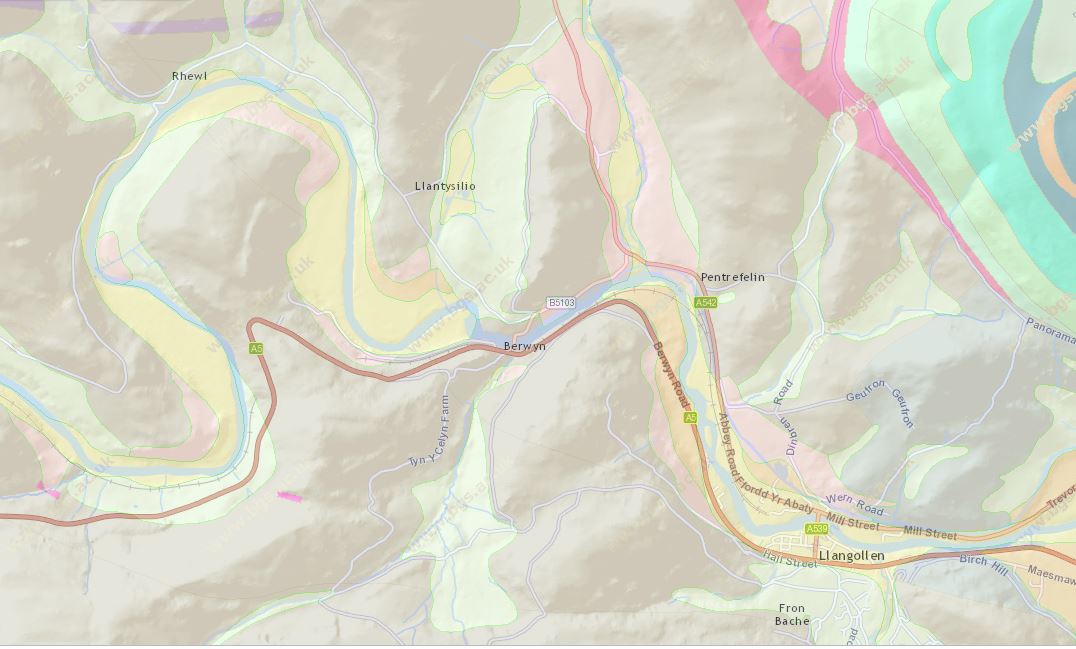Rivers and their valleys
Valleys are formed by flowing water, and a river valley is usually V-shaped. The exact shape, however, will depend on the characteristics of the stream flowing through it. Rivers with steep gradients, as in mountain ranges, produce steep walls and a narrow bottom. Shallower slopes may produce broader and gentler valleys.
Sometimes though, glaciers have gouged out deep U-shaped valleys during the Ice Age. In this case the valley floor is flat and wide and the river can meander (look upstream from the Horseshoe Falls and you can see the river meander or loop across the fields - the river channel is wide and looks slow moving).
Sometimes a river starts to try and cut down or erode downwards into the valley floor. This is the case near the Chainbridge Hotel. You can see the river valley appears narrower and there is more energy in the river – there are rapids and churned-up water in the river. The question is why? Have a look at the geology map below to see if there is a fault in the area, a harder band of rock, or even a smaller river joining the main river which changes the river dynamics. You will see on a geology map, that the U-shaped valley formed by the glacier heads northwards at the Horseshoe Falls, whereas the river continues west. If you climb to the top of Velvet Hill, you can see the whole glacial valley as it meanders around the hill.

Another contrasting feature to look at is whether there is sediment in the bed of the river? If so, the river is generally slower moving and the sediment is shifted relatively slowly. If the river is eroding and moving quickly, then the bed of the river is often bedrock with the sediment having being washed away to another, slower, part of the river.
Tasks:
River Dee (by kissing gate below Llantysilio Church): 52°58.948'N, 3°12.013'W
Use your GPS to calculate how far it is from where you are standing by the gate, across the river and valley floor, past the telegraph pole, and to the edge of the railway embankment and look at the nature of the river – is it fast or slow?
Stage 2: River Dee (from the edge of the Chain Bridge opposite the hotel): 52°58.820'N, 3°11.678'W
Use your GPS to calculate how far it is from where you are standing at the end of the bridge to the end of the suspension chains where they fix to the bank behind the hotel and look at the nature of the river – is it fast or slow?
At both locations
Observe the river bed at both locations, they are markedly different. At one location the bed consists of sand and gravel. At the other location you will not be able to see any sand or gravel and can only see solid bedrock.
Questions
Question 1: Using your measurements and observations from the two locations, together with the information given in the cache description, describe and explain how the river differs between the two locations?
Question 2: Looking into the river at the 2 waypoints you can observe a marked difference between the river bed. At one waypoint the river is running over sediment and at the other the river is running over bedrock. Using the information given in the description please explain why the river bed is so markedly different at these 2 locations.
You should send your answers by email or the Message Centre and you can log your find as soon as you have done so. We will endeavour to get back to you as soon as possible.